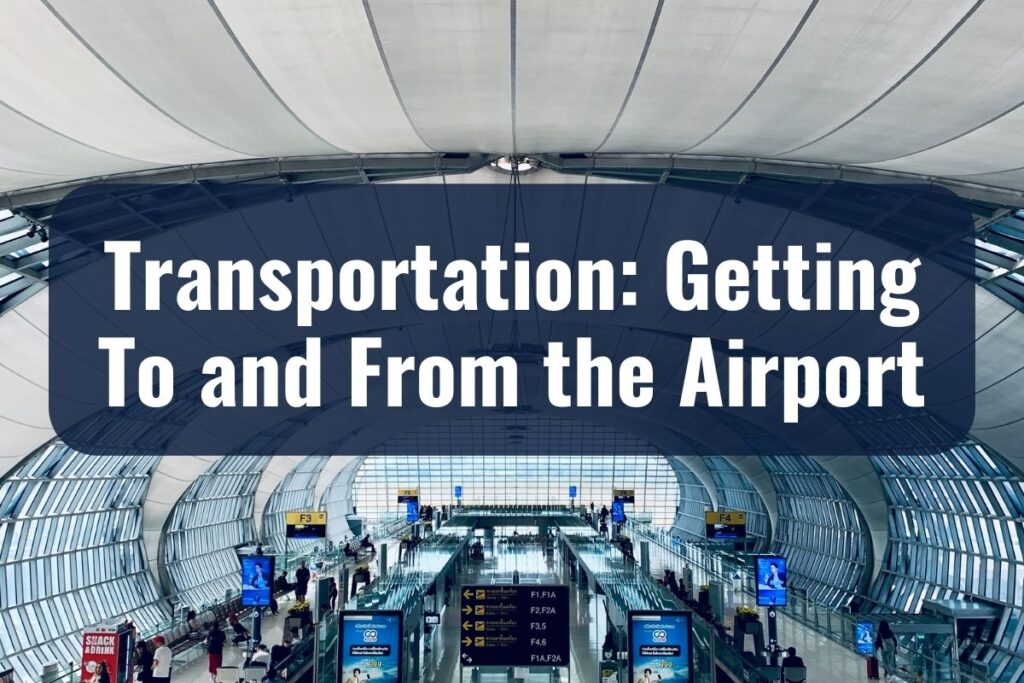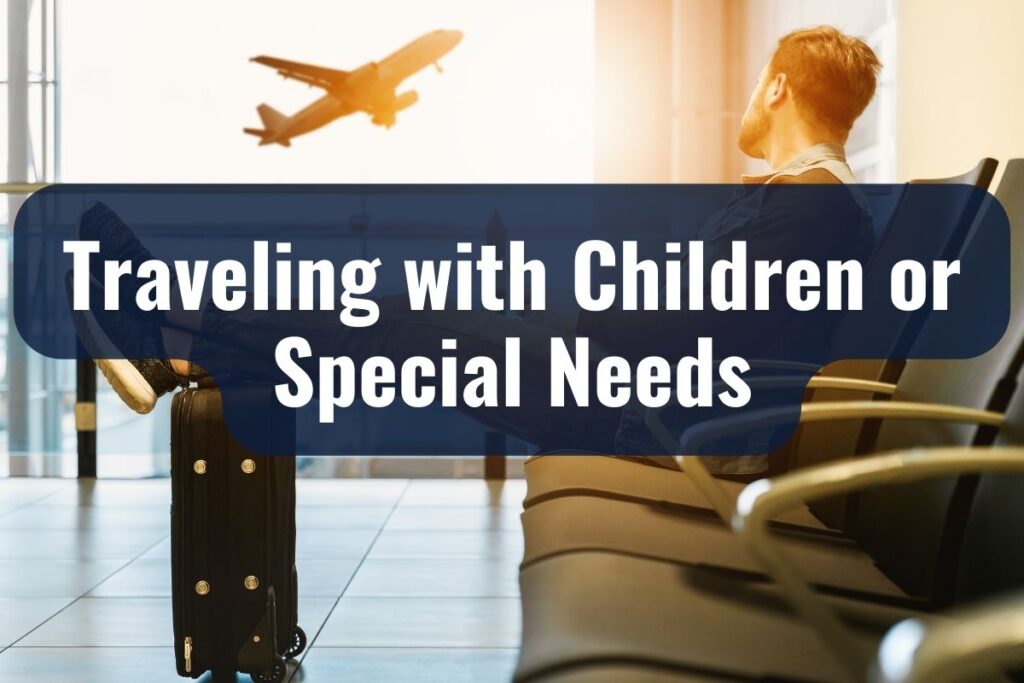Thailand is not just a paradise for beach lovers, temple enthusiasts, and street food aficionados. It’s also a hub for international and regional travel, owing to its strategic location in Southeast Asia and its reputation as a must-visit destination. For foreigners, whether you’re a first-time visitor or an expat settling in for the long haul, airports in Thailand play a crucial role in your journey. Understanding these gateways can make your travels smoother and free from unnecessary hiccups.
For many foreigners, the airport is the first impression of Thailand. It’s where the adventure begins. From the warm greetings of the airport staff to the first taste of Thailand’s culinary delights at the airport eateries, the experience sets the tone for the entire trip. Moreover, with English signage and assistance readily available, these airports ensure that language barriers are minimal, making navigation and transit a breeze for non-Thai speakers.
KEY TAKEAWAYS
- Thailand’s major international airports include Suvarnabhumi, Don Mueang, Phuket, and Chiang Mai.
- Signage in airports is bilingual, with English widely used, making navigation easier.
- Numerous transportation options, from taxis to rail links, connect airports to cities.
- Airport-adjacent accommodations range from luxury hotels to budget-friendly options.
- Thai airports prioritize health and safety with modern medical facilities and strict security protocols.
Major International Airports in Thailand
Thailand’s robust tourism and its allure as a top travel destination have led to the development of several international airports across the country. These airports not only serve as the primary entry and exit points for international travelers but also act as crucial hubs for regional flights.
| Airport | Location | Highlights |
| Suvarnabhumi (BKK) | Bangkok | Modern architecture, extensive shopping, major carriers. |
| Don Mueang (DMK) | Bangkok | Serves low-cost carriers, one of the world’s oldest airports. |
| Phuket International (HKT) | Phuket | Gateway to Andaman beaches, modern facilities. |
| Chiang Mai International (CNX) | Chiang Mai | Access to Northern Thailand, regional and some international flights. |
Bangkok
Suvarnabhumi Airport (BKK)
Often the first touchdown point for many travelers, Suvarnabhumi Airport is a marvel of modern architecture fused with Thai design elements. Located around 30 kilometers east of downtown Bangkok, it’s one of the busiest airports in Asia. Suvarnabhumi caters to most international carriers and offers a plethora of amenities, from extensive shopping options to a variety of dining experiences.
Don Mueang Airport (DMK)
Holding the record as one of the world’s oldest international airports, Don Mueang now primarily serves low-cost carriers. Despite being older, it remains a vital part of Thailand’s aviation scene and is a preferred choice for many travelers looking to hop onto regional flights or those on budget airlines.
Phuket
Phuket International Airport (HKT)
As the main entry point to the famed beaches of Phuket and other islands in the Andaman Sea, this airport sees a steady flow of sun-seekers and beach enthusiasts. Located in the north of Phuket Island, it has grown in recent years, with terminals showcasing a blend of modernity and local aesthetics.
Chiang Mai
Chiang Mai International Airport (CNX)
Nestled in the mountains of Northern Thailand, Chiang Mai offers a different flavor of Thai culture and history. Its airport, while smaller than those in Bangkok and Phuket, is efficient and welcoming. It serves both international flights, mainly from neighboring countries, and domestic routes, making it a pivotal point for those exploring the northern terrains and cultural landmarks.
While these are the primary international airports, Thailand also houses several other airports in cities like Krabi, Hat Yai, and Chiang Rai, catering to specific tourist spots and regional routes. Each of these, in their own right, ensures that travelers have a smooth and memorable entry and exit from the Kingdom of Thailand.

Thailand’s airports are designed keeping international travelers in mind. Here’s a guide to help you maneuver through these hubs with ease and confidence.
Language and Signage
While Thai is the predominant language, most signs in international airports are bilingual, with English clearly marked. This extends from arrival and departure information, restroom signs, to directions for key facilities.
For those eager to blend in or make a friendly impression, it’s worth noting a couple of Thai phrases. A simple “Sawadee” (Hello) or “Khob Khun” (Thank you) can brighten a local’s day and perhaps even yours.
Information Desks and Assistance
Strategically placed throughout the airports are information desks, staffed with personnel equipped to assist in English. They can provide guidance on various topics, from airport navigation to transportation recommendations. Don’t hesitate to approach them; they’re there to help!
Airport Maps
Most airports in Thailand offer detailed maps, available both physically at kiosks and digitally on the airport’s website. These maps are handy tools to get a sense of the airport layout, the location of essential amenities, and the best routes to your boarding gates.
Currency and Payments
While credit and debit cards are widely accepted at major outlets within the airport, it’s always a good idea to have some Thai Baht on hand, especially for smaller kiosks or transport services outside the airport. Currency exchange counters are abundant in arrival halls, but for the best rates, consider exchanging only a minimal amount and then utilizing local banks or currency exchanges in the city.
Connectivity and Communication
Free Wi-Fi is a standard feature in most of Thailand’s major airports. Keep an eye out for network names and any accompanying instructions, typically displayed on banners or pillars. Some networks may require a local number for authentication via an SMS code.
If you’re in need of a local SIM card, there are several kiosks at the arrival sections of the major airports, offering a range of plans suitable for short-term travelers to long-term visitors.
Staying Energized and Entertained
While you’re in transit or awaiting your flight, there’s a lot to explore within the airport. From a wide range of duty-free shopping options to diverse food courts offering both tantalizing Thai cuisine and familiar international dishes, there’s something for everyone. Moreover, many airports have relaxation zones, massage parlors, and even small gardens where you can unwind.
Related: Mastering Thai Greetings: Respect, Nuance, and Connection
Airport Facilities: What to Expect
Thailand, understanding the importance of these touchpoints, has equipped its international airports with a variety of amenities tailored to cater to the diverse needs of its visitors.
Seamless Connectivity
Almost all major airports in Thailand offer free Wi-Fi to keep travelers connected. Whether you’re looking to catch up on work, video call loved ones, or merely browse to kill time, the airports have got you covered. Sign-in details and connection procedures are usually straightforward, with instructions provided in English.
Currency and Financial Services
For those fresh off an international flight, handling finances is often a primary concern. Thankfully, Thai airports come equipped with:
Currency exchange counters: While these might not always offer the best rates compared to city centers, they provide immediate convenience.
ATMs: Spread throughout the airport, these machines cater to a variety of international banking networks.
Banking services: Some larger airports even have bank branches where travelers can set up accounts or handle more complex financial transactions.
Shopping and Retail Therapy
If shopping is your way of dealing with layover blues, Thai airports won’t disappoint.
Duty-free stores: These abound, offering everything from high-end luxury goods to local Thai products.
Souvenir shops: Ideal for those last-minute gifts or mementos to remember your trip.
Bookstores: With a selection of English-language books, perfect for grabbing something for your onward journey.
Gastronomic Delights
Food is an integral part of the Thai experience, and the airports serve as a microcosm of the country’s rich culinary landscape.
Local cuisine: From Pad Thai to Mango Sticky Rice, travelers can sample authentic Thai dishes even before they step out of the airport.
International eateries: Recognizable chains and global cuisines ensure that everyone finds something to their liking.
Relaxation and Leisure
Traveling can be taxing, and airports in Thailand recognize the importance of relaxation.
Massage parlors: Offer traditional Thai massages, perfect for kneading away the stress of a long flight.
Lounge access: For those flying business or first class, or with applicable credit card perks, lounges provide a serene environment to relax or work. Even if you’re not eligible through your ticket, some lounges offer paid access.
Quiet zones: Specific areas designed for travelers looking for some peace away from the hustle and bustle.
Special Assistance and Medical Care
For travelers with special needs or those feeling under the weather:
Medical clinics: Available for basic healthcare needs or emergency situations.
Wheelchair services: Can be availed by contacting the airline in advance or approaching the information desk.
Facilities for parents: Baby care rooms and children’s zones ensure traveling with little ones is less stressful.
Transportation: Getting To and From the Airport

Arriving at a foreign destination, one of the immediate concerns for most travelers is transportation: How do I get to my hotel? What’s the best way to reach a specific landmark? Thankfully, Thailand’s major airports are well-connected with a plethora of transportation options, ensuring a smooth transition from air to land.
Taxis: The Direct Route
Taxis are perhaps the most straightforward way to get to your destination, especially if you’re laden with luggage or traveling as a group.
Airport taxis: Designated taxi stands can be found at the exit points of all major airports. Ensure the driver uses the meter for a transparent fare. While there’s usually an airport surcharge, the convenience often outweighs the extra cost.
Ride-sharing apps: Services like Grab are operational in many Thai cities and can be a convenient way to book a ride, especially if you’re familiar with the service from your home country.
Rail Links: Speed and Efficiency
Some airports, especially in Bangkok, have direct rail services connecting them to the city center.
Airport Rail Link (ARL): Operating from Suvarnabhumi Airport in Bangkok, the ARL offers a swift connection to the heart of the city. It’s an excellent option to bypass the notorious Bangkok traffic and reach key transit points for further connections.
Buses and Shuttles: Budget-Friendly Options
For the budget-conscious traveler:
Airport buses: Several routes connect the airports to major hubs in the city. While they might take longer due to frequent stops, they’re light on the pocket and provide a chance to see the cityscape.
Hotel shuttles: Many hotels, especially those closer to the airport, offer shuttle services. It’s advisable to inquire and book these in advance for a hassle-free transition.
Car Rentals: For the Adventurous
If you’re keen on exploring Thailand at your own pace:
Most international airports in Thailand have kiosks for renowned car rental services. While driving in Thailand offers flexibility, be sure to familiarize yourself with local traffic norms and always carry an international driving license.
Local Tips for Smooth Transits
- Peak hours: Bangkok, in particular, is known for its traffic jams. If you’re traveling during peak hours, account for potential delays, especially if you’re catching a flight.
- Fare negotiations: In some tourist-heavy areas, local taxis might quote inflated prices. Always insist on using the meter or agree on a fare beforehand if using services outside the official airport taxis.
- Language barrier: While many drivers understand basic English, having your destination written in Thai can be helpful. Most hotels provide business cards with their address in both English and Thai, making it easier for drivers to understand.
Staying Near the Airport: Recommendations
Whether you’re catching an early morning flight, are on a quick layover, or simply prefer the proximity to the airport for any other reason, staying near the airport has its advantages. Here’s a guide to making the most of airport-adjacent accommodations.
The Perks of Proximity
Before diving into recommendations, it’s worth understanding why many choose to stay close to the airport:
- Stress-free transits: Say goodbye to the anxiety of possibly missing your flight due to unforeseen city traffic.
- Ideal for layovers: Perfect for those with limited hours between flights, allowing for rest and rejuvenation.
- Immediate check-ins: After a long-haul flight, immediate access to a hotel bed can be pure bliss.
Bangkok: Suvarnabhumi and Don Mueang
Suvarnabhumi Airport (BKK)
Novotel Bangkok Suvarnabhumi Airport: Directly connected to the airport, this 4-star hotel offers top-notch facilities, from a spa to multiple dining options.
Boxtel: An interesting choice for those on a short layover, Boxtel offers sleep boxes right inside the airport.
Don Mueang Airport (DMK)
Amari Don Muang Airport Bangkok: Connected to the airport via a walkway, this hotel is a favorite among business travelers and offers a refreshing pool and multiple dining choices.
Sleep Box by Miracle: A budget-friendly option located within the airport terminal, perfect for travelers in need of a quick nap and shower.
Phuket International Airport (HKT)
Phuket Airport Hotel: Just a 5-minute drive from the airport, it’s known for its comfortable rooms and friendly service.
Naiyang Beach Hotel: If you wish to combine proximity to the airport with beach vibes, this is an excellent pick. It’s a stone’s throw from Naiyang Beach, letting you soak in the sea breeze.
Chiang Mai International Airport (CNX)
Airport Resident 2: A budget-friendly option, this hotel offers basic comforts and is just a few minutes away from the airport.
VC@Suanpaak Hotel & Serviced Apartment: Closer to luxury, this establishment boasts a pool and well-appointed rooms, ensuring a comfortable stay.
Essential Considerations:
- Shuttle services: Many airport-adjacent hotels offer complimentary shuttle services. It’s wise to inquire about the schedule and whether prior booking is required.
- Noise levels: Given the proximity to runways, some hotels might experience flight noise. If you’re a light sleeper, requesting rooms away from the flight path or using earplugs can be helpful.
- Advance bookings: Airport hotels, given their strategic location, often see high occupancy rates. It’s advisable to book in advance, especially during Thailand’s peak tourist seasons.
Cultural Etiquettes and Tips

Thailand, known for its rich tapestry of history, tradition, and culture, is often described as a blend of the ancient and the modern. As a traveler, understanding and respecting these cultural nuances can elevate your experience, ensuring not just smooth interactions, but also deeper connections with the locals. Here’s what you need to know when navigating Thai airports and beyond.
Dressing Appropriately
While airports are modern spaces, a general rule of thumb in Thailand is to dress modestly.
- Respectful attire: It’s preferable to avoid overly revealing clothing. This is especially important if you plan to visit religious sites straight from the airport.
- Comfort meets courtesy: While comfort is key, especially after a long flight, pairing it with modesty, such as wearing light linen pants instead of shorts, can make a difference in the impression you leave.
The Art of the ‘Wai’
The ‘Wai’ is a traditional Thai greeting, which involves a slight bow with the palms pressed together in a prayer-like fashion.
- When and how: While it’s not expected for foreigners to initiate the ‘Wai’, returning one is seen as a sign of respect. The gesture varies based on the age or status of the person you’re greeting, but as a traveler, a simple return of the gesture is sufficient.
- Airport interactions: While you might encounter this greeting in more traditional settings, don’t be surprised if airport staff or hotel representatives greet you with a ‘Wai’.
Interacting with Locals
Thais are known for their friendliness and hospitality. A few tips can make these interactions even more rewarding:
- Politeness: Thai culture places a high value on being polite and calm. Raising one’s voice or showing visible frustration is frowned upon.
- Language: While many in the tourism sector speak English, a few basic Thai phrases can go a long way. “Khop khun” (Thank you) or “Sawadee” (Hello) can break the ice and often lead to smiles and warmer interactions.
Respect for the Monarchy
Thailand holds its royal family in high regard.
- Images and representations: You might notice images of the royal family in airports and various other places. Always treat these with respect.
- Conversations: It’s advisable to approach any discussions about the monarchy with sensitivity and respect.
Handling Religious Icons and Artifacts
With numerous travelers keen on taking a piece of Thai culture home:
- Buddha statues and images: While these are popular souvenirs, ensure they’re handled with care and respect. Remember that it’s illegal to take Buddha images out of Thailand without permission.
- Temples and sacred sites: If your travels from the airport lead you directly to a temple or religious site, always dress modestly, remove your shoes before entering, and follow the local customs.
Health and Safety at Thai Airports
Ensuring the health and safety of travelers is paramount, and Thai airports have diligently implemented measures to meet international standards while also addressing specific local needs. As a visitor, being aware of the facilities and guidelines in place can make your transit through these airports not just comfortable but also secure.
Health Measures and Facilities
Amid the ever-evolving global health scenario, Thai airports have ramped up their health protocols to ensure the well-being of all visitors.
- Health screenings: Thermal scanners and health checkpoints are commonplace at international arrival sections. It’s crucial to cooperate with these screenings for your safety and that of others.
- Medical clinics: Should you feel unwell or need any medical assistance, clinics are available at major airports, staffed with trained personnel, and equipped to handle a range of health issues.
- Sanitization: Regular cleaning and disinfecting procedures are in place across the airports, from restrooms to seating areas, ensuring a hygienic environment.
Access to Safe Drinking Water
Staying hydrated during your travels is essential. However, when it comes to drinking water:
- Tap water: While tap water in Thailand is treated and purified, it’s not generally recommended for drinking. Use it for cleaning and washing, but consider bottled water for consumption.
- Bottled water: Available abundantly at kiosks and vending machines in the airport. Always ensure the seal is intact before drinking.
Security Measures
Thai airports, like international counterparts, have stringent security protocols to ensure traveler safety.
- Security checks: Expect to go through thorough security screenings, both when entering and exiting the country. Cooperation with airport security staff ensures a smooth process for everyone.
- Luggage safety: Keep an eye on your belongings, especially in crowded areas. Using luggage locks and tags can provide additional safety against theft or misplacement.
- Emergency procedures: In the unlikely event of an emergency, follow the instructions provided by airport personnel and displayed on signs. Familiarize yourself with emergency exits and assembly points when in waiting or lounge areas.
Traveling During Local Health Concerns
Thailand, like many countries, occasionally faces health challenges, such as dengue fever or other region-specific concerns.
- Preventative measures: Depending on the season and prevailing health advisories, consider carrying mosquito repellents or wearing appropriate clothing.
- Stay informed: Keep abreast of any health advisories issued by your home country or international health organizations when traveling.
Personal Health Considerations
For those with specific health concerns:
- Medications: Always carry essential medications in your hand luggage, along with a copy of the prescription. Some medications may require a formal declaration at customs.
- Allergies and dietary restrictions: If you plan to eat at the airport, be proactive about inquiring into ingredients, especially if you have food allergies or dietary preferences.
Traveling with Children or Special Needs

Journeys become even more memorable when shared with loved ones. However, traveling with children or those with special needs requires a tad more planning and consideration. Thai airports, recognizing the diverse needs of their travelers, offer a range of facilities and services to ensure that every passenger, irrespective of age or ability, has a smooth and comfortable transit experience.
For the Young Travelers
Children, with their boundless energy and curiosity, can find airports both exciting and overwhelming. To make their experience enjoyable:
Play areas: Many Thai airports have dedicated play zones where children can expend energy and engage in fun activities.
Baby care rooms: These facilities, equipped with changing stations and feeding areas, provide a private and comfortable space for parents and infants.
Priority boarding: Families with young children often get the advantage of early boarding, allowing you extra time to settle in before a flight.
For Travelers with Special Needs
To ensure an inclusive environment, Thai airports provide several facilities for those with mobility challenges or other special needs:
Wheelchair services: Available on request, these services ensure easy transit through the vast airport spaces. It’s advisable to inform your airline in advance to ensure seamless service upon arrival.
Assistance for visually or hearing-impaired: Signage in Braille and availability of personnel trained in sign language at information desks make navigation easier.
Special waiting areas: These areas are designed for comfort, with facilities catering to specific needs.
General Tips for a Smooth Experience
- Pack smart: If traveling with kids, ensure you have a bag with all their essentials – snacks, toys, and any medication. For those with special needs, keep all necessary equipment or documentation easily accessible.
- Early arrival: Arriving a bit earlier than usual gives you the buffer to address any unforeseen challenges, from diaper changes to paperwork.
- Communicate your needs: Don’t hesitate to communicate any specific requirements you might have, whether to airline personnel or airport staff. They are there to assist and ensure your comfort.
- Stay informed: Familiarize yourself with the airport layout in advance. This helps in identifying the location of essential facilities, be it nursing rooms or accessible restrooms.
- Security checks: Children and individuals with mobility aids might need to go through specific procedures at security checkpoints. Stay patient and cooperate with the staff; they’re trained to ensure your safety while being considerate of your needs.
Final Tips for a Smooth Experience
Embarking on a journey, be it for leisure, business, or any other purpose, is always filled with a mix of excitement and anticipation. To ensure your experience at Thai airports is as seamless and enjoyable as the adventures that await beyond, here are some final pearls of wisdom to keep in mind.
Time Management
- Arrival times: For international flights, it’s advisable to arrive at least 3 hours before your scheduled departure. This allows ample time for check-in, security checks, and any last-minute shopping or relaxation.
- Flight status: Keep an eye on the flight status, especially during peak seasons or inclement weather. Many airports offer real-time updates on their websites or through dedicated mobile applications.
Shopping and Duty-Free Allowances
- Know your limits: While the allure of duty-free shopping is undeniable, be aware of the allowances and restrictions based on your destination country. Overstepping these can lead to additional charges or confiscation at customs.
- Local products: Thailand offers a treasure trove of local products, from spices to handicrafts. While airport shops provide convenience, ensure you’re aware of any import restrictions of your home country, especially for food products.
Keeping Documents Handy
- Organized travel: Keep all essential documents – passport, visa (if applicable), tickets, and any other relevant paperwork – in an easily accessible pouch or folder. This not only speeds up processes like check-in and immigration but also reduces the stress of rummaging through luggage at crucial moments.
Connectivity and Power
- Stay charged: With increasing dependence on digital devices, from mobile boarding passes to travel apps, ensure your devices are charged. Carrying a portable charger or power bank can be a lifesaver, especially during long layovers.
- Local SIM cards: If you plan to stay in Thailand for an extended period, consider purchasing a local SIM card at the airport. This provides you with immediate connectivity, allowing for easy communication and navigation from the get-go.
Personal Care and Comfort
- Stay hydrated: Air travel can be dehydrating. Drink ample water, and keep moisturizers or lip balms handy. Most airports also have water fountains post-security checks where you can refill your bottles.
- Comfortable attire: Especially for longer flights, wear comfortable clothing and shoes. If your journey includes varying climates, layering is key.
Respect and Courtesy
Lastly, while it might seem trivial, a smile, a thank you, or a nod of acknowledgment goes a long way. Airport personnel, from security staff to cabin crew, work tirelessly to ensure your journey is safe and comfortable. A gesture of gratitude or understanding, especially during peak times or unforeseen delays, can make a world of difference.
Related: How to be Polite in Thailand: A Practical Guide for Foreigners


